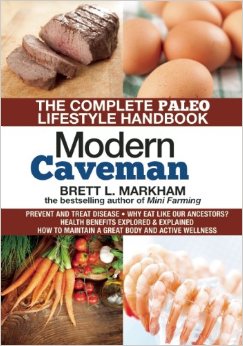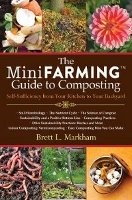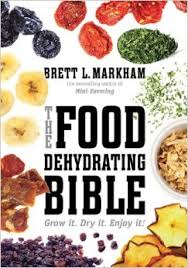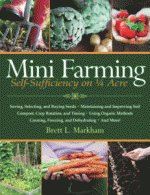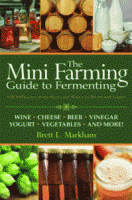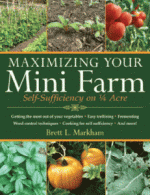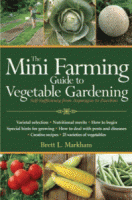I typically write about matters of farming, food preservation and nutrition. I figure since most folks are familiar with me through my books on these topics, that’s what they’d be seeking here! But though I have no intention of writing regularly about the topic, I think ham radio has a place in these discussions.
One of the major benefits of growing and preserving your own food is that you are well prepared for an unforeseen emergency long before an emergency occurs. The time to start raising your own food is *before* all the supermarket aisles have been cleaned out. The time it takes to start seedlings and grow food to the point of useful harvest is long enough that you’d starve while waiting for the food — so it is something you should have running all along so you are already prepared no matter what time of year an emergency occurs. And if there is no emergency? Well, you’ll just have superior food while saving a ton of money in the meantime!
People are generally aware of the risk of food shortages, which is why you’ll see grocery stores cleaned out just before major storms. And they are aware of the risk of electrical outages, which is why so many people buy generators. But few people are aware of how delicate our communications infrastructure really is.
In 2008, my region was hit with a major ice storm. Practically every utility pole in my town was snapped. Trees and utility poles littered the roads, making them impassable for three days. Nobody in, nobody out. I don’t live in Alaska or the backwoods of Montana. I live within a 90-minute drive of Boston, so this scenario is not a far-fetched thing that can only affect people living in the hinterlands.
There was no electricity at all in the region for anywhere from six to twenty days. There was no land-line phone, and no cable service. But what most people didn’t expect was the lack of cell phone service. The cell tower backup generator ran out of fuel before the downed trees could be cleared sufficiently for fuel to be brought. The ONLY communications out of the area were by radio.
VHF radio and UHF radio is strictly line-of site. The reason the VHF walkie talkies work over longer distances is because of repeaters. But the repeaters had no power after their backup batteries were exhausted. So the only communication was via satellite (for those equipped for satellite communication) or HF (high frequency) radio.
And this is where low power Morse code shines. In ham radio speak, that is QRP (low power) CW (continuous wave a/k/a Morse Code). A SSB (single sideband) voice signal requires 2Khz of spectrum, but a CW signal requires only 200 Hz of spectrum. Because of the power density, a 5-watt CW signal is more easily detected and interpreted than a 100-watt voice signal. And these low power CW transmitters can work for hours and hours on small 5Ah and 7Ah sealed lead acid gel cells or for days and days on a car battery.
Of course, just as it would have been too late to start a garden and feed the family in the midst of an ice storm, it would have been too late to develop ham radio skills too. The time to have the garden and saved food is before you need it, and the time to have ham radio skills and gear is before you need them.
In the aftermath of the ice storm in 2008, we wanted for nothing while the infrastructure in the region was rebuilt. We already had plenty of food set aside, and I harvested fresh eggs from the chickens that we fried on the wood stove. And though I didn’t need to make any emergency communications, my station was at the disposal of local authorities should it be needed. I felt better knowing that if those radio skills were needed — I had them along with the requisite (inexpensive) gear.
If you are interested in growing your own food (and better food than money can buy!) — you are in the right place!
But if you want to go beyond that in your preparedness plans and enhance your communication abilities with low power Morse code, I would encourage you to get in touch with the American Radio Relay League to get your license, and with the North American QRP CW Club to get pointers on QRP and learning Morse code.
Filed under: Emergency preparedness, Ham radio


